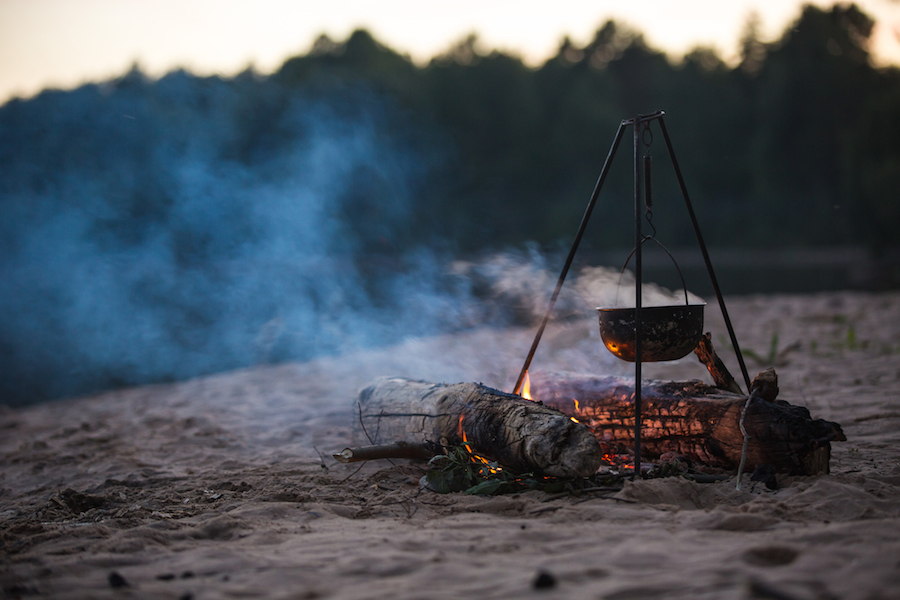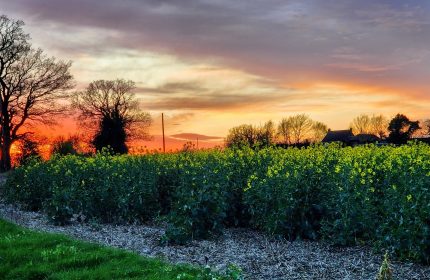Like barbecuing? Here’s how to get into full-blown fire cookery
The food world has become thoroughly enamoured with going back to caveman basics: Cooking over hot coals and setting fire to wood to cook supper over.
Most of us are content with the odd Sunday barbecue, but there’s a growing trend for cooking over flames that aren’t being generated by a gas canister, and for clocking the difference between hickory, cherry and apple wood when you’re smoking your joints outdoors.
Among the most vocal pioneers of the technique are the likes of River Cottage chef and cookbook writer Gill Meller, travelling grill group DJ BBQ and the BBQ Zoo Crew, and Nick Weston, who runs foraging and game cookery school, Hunter Gather Cook.
Here’s what you need to know if you want to get involved…
What is fire cookery?
Essentially, it’s cooking outdoors, over fire. The question really is, how involved with it do you want to get? And how elaborate are you prepared to have your grill setup?
“It’s really interesting,” says Simon Stallard (The Hidden Hut, £20), who runs weekly cult feast nights on huge homemade grills on Porthcurnick Beach in Cornwall. “It beats just turning on the gas grill.”
Is it really any different to barbecuing?
Compared to charring a couple of sausages over a disposable barbecue from the petrol station, it is fairly different. “Those things are full of chemicals,” notes Josh Katz (Berber & Q, £25), founder of London grill joint, Berber & Q.
Fire cookery is more like campfire cooking, and is as much about getting to grips with grilling as it is about getting back to nature, and respecting nature’s role in what you’re cooking. That means taking an interest in the provenance of the coal and wood you’re burning up, and seeing them as flavourings and ingredients in themselves.
What kit do you need to get involved?
This depends on how much you want to commit, and what your budget is.
“I’m not saying spend £2-£3,000 on a grill, because ultimately it’s about the fuel that you use, how you use it, and how you cook with it,” explains Stallard. “There are so many bits that people can be really resourceful with and recycle and upcycle, and just make amazing grills.”
Sure, you can go out and buy one, but there’s so many ways you can fashion your own thrifted grill. Washing machine drums, tractor tyres, a stone-lined pit, or just two stacks of bricks with a grill laid over the top would all work a treat.
Save your money for your food and for your fuel, says Stallard. “We’re anoraks,” he admits. “We basically have a wood library, where we pick the wood for the feasts. We’ve built walls of it.” They even plan and store their wood for almost three years ahead.
Where can you do it?
Your garden will do, and anywhere you’re allowed to have campfires – always check!
What if I’ve never cooked over fire before?
Start slow and build yourself up. The principles are the same as cooking with an oven, you’re just using a different method to apply heat to cook something. Don’t go all in and accidentally create a bonfire. Try doing simple things, like chicken wings or veg skewers first, and get to grips with direct (putting food right over the host coals/smoldering wood) and indirect cooking (using cooler patches of the fire), and seeing the effects.
Stay calm, and know your health and safety too. All it takes, says Katz, is a bit of patience and practise: “Learn to think with a clear head, and take a lot of the stress out of it, and then you’ll find it a really enjoyable way to cook.”
The Press Association
Latest posts by The Press Association (see all)
- 3 recipes to make from the new Hairy Bikers cookbook - April 26, 2024
- World Penguin Day: Test your knowledge with our penguin-themed quiz - April 23, 2024
- Kate’s new photo of Louis released to celebrate prince’s sixth birthday - April 23, 2024
- Alan Titchmarsh: Slugs are never going to be my friends - April 23, 2024
- Prince Louis celebrates sixth birthday - April 23, 2024






















